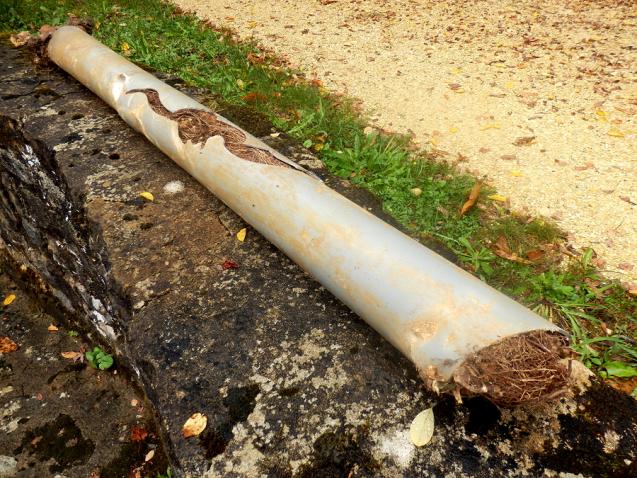
Innovations in Smoke Alarms: Comparing the Latest Technologies
By Fluid Plumbing|June 26, 2024
Smoke alarms are pivotal in safeguarding homes, providing an early warning system to protect lives and property. As technology surges ahead, smoke alarms have seen impressive innovations. This article aims to compare the latest advancements in smoke alarm technology, pinpointing the benefits of opting for modern solutions over traditional models, and guide you in choosing effective smoke alarms for safety.
Traditional Smoke Alarms vs Modern Technologies
Traditional smoke alarms have long been the frontline defenders in fire safety. They primarily operate through ionisation or photoelectric mechanisms. Ionisation alarms detect fast-flaming fires, making them suitable for detecting fires involving paper or grease. Yet, these alarms may miss slower, smouldering fires, which are equally dangerous.
Contrastingly, modern smoke alarms leverage advanced technologies to overcome these limitations. Introducing features like multiple sensors, smart connectivity, and eco-friendly designs, they offer comprehensive protection. Understanding these differences is crucial for making informed decisions about home safety.
Photoelectric Smoke Alarms
Photoelectric smoke alarms function by utilising a light source and sensor to detect smoke. When smoke particles enter the chamber, they scatter the light, prompting the alarm to sound. This type of alarm excels in identifying smouldering fires, such as those involving upholsteries or bedding, which can slowly develop before bursting into flames.
Compared to ionisation smoke alarms, photoelectric alarms react more effectively to smoky, slow-burning fires. Homes with lots of soft furnishings would particularly benefit from these alarms. They are also less likely to trigger false alarms from cooking fumes, making them ideal for areas near kitchens.
Dual-Sensor Smoke Alarms
Dual-sensor smoke alarms bring together the best of both worlds by combining photoelectric and ionisation technologies into a single unit. This blend means they can detect both fast-flaming and slow-smouldering fires more efficiently than single-sensor alarms.
The primary benefit of dual-sensor alarms is their broadened scope of detection, offering responsive protection against various fire types. When seconds count, the quicker detection of fire threats can make a substantial difference. However, dual-sensor alarms can be more expensive and may require more maintenance due to the combined technologies.
Smart Smoke Alarms
The emergence of smart smoke alarms represents a significant leap forward in home safety. These alarms incorporate features like Wi-Fi connectivity, enabling them to send smartphone alerts when activated. An integration with smart home systems allows users to monitor their alarms remotely, receive battery status updates, and even silence false alarms via their devices.
Smart alarms also often come with voice alerts, distinguishing between smoke and carbon monoxide warnings. This specific identification can help determine the nature of the emergency, saving valuable time. Leading products in this category include the Google Nest Protect and First Alert Onelink, which exemplify the benefits of smart technology in everyday safety.
Advanced Detection Technologies
Advanced detection technologies, such as laser and air sampling, push the boundaries of traditional smoke detection. Laser smoke detectors use focused beams of light to detect even minute smoke particles with high precision. These are typically found in high-risk areas where early detection is crucial, like data centres or archives.
Air sampling smoke detectors, on the other hand, continuously draw air into a detection chamber to identify smoke at very low concentrations. This technology offers the advantage of delivering immediate alerts, even before the human eye can see smoke. Consequently, advanced detectors provide unparalleled protection in environments where an early warning is critical.
Eco-Friendly and Low-Maintenance Smoke Alarms
In an era that values sustainability, eco-friendly smoke alarms have garnered interest. These alarms are designed with recyclable materials and long-life batteries, reducing environmental impact. Some models also feature sealed lithium batteries that can last up to ten years, minimising the need for frequent battery changes and reducing waste.
Low-maintenance features, such as self-testing capabilities and tamper-resistant designs, ensure that these smoke alarms remain reliable over extended periods. Brands like Kidde and First Alert have been at the forefront of developing eco-friendly models, promoting safer homes while being kinder to the environment.
Conclusion
In conclusion, the innovations in smoke alarm technologies have significantly enhanced home safety. Whether considering the heightened detection capabilities of photoelectric or dual-sensor alarms, the convenience and comprehensive features of smart smoke alarms, or the cutting-edge precision of advanced detection technologies, there is a wide array of options to meet diverse needs. Moreover, the shift towards eco-friendly and low-maintenance smoke alarms underscores the importance of sustainable, long-term solutions.
Upgrading to modern smoke alarm systems is a strategic investment in safety, ensuring better protection and peace of mind. Making an informed choice based on specific requirements and living environments will not only optimise safety but also align with contemporary lifestyle needs. Staying abreast of technological advancements in home safety is crucial in safeguarding what matters most.
Traditional Smoke Alarms vs Modern Technologies
Traditional smoke alarms have long been the frontline defenders in fire safety. They primarily operate through ionisation or photoelectric mechanisms. Ionisation alarms detect fast-flaming fires, making them suitable for detecting fires involving paper or grease. Yet, these alarms may miss slower, smouldering fires, which are equally dangerous.
Contrastingly, modern smoke alarms leverage advanced technologies to overcome these limitations. Introducing features like multiple sensors, smart connectivity, and eco-friendly designs, they offer comprehensive protection. Understanding these differences is crucial for making informed decisions about home safety.
Photoelectric Smoke Alarms
Photoelectric smoke alarms function by utilising a light source and sensor to detect smoke. When smoke particles enter the chamber, they scatter the light, prompting the alarm to sound. This type of alarm excels in identifying smouldering fires, such as those involving upholsteries or bedding, which can slowly develop before bursting into flames.
Compared to ionisation smoke alarms, photoelectric alarms react more effectively to smoky, slow-burning fires. Homes with lots of soft furnishings would particularly benefit from these alarms. They are also less likely to trigger false alarms from cooking fumes, making them ideal for areas near kitchens.
Dual-Sensor Smoke Alarms
Dual-sensor smoke alarms bring together the best of both worlds by combining photoelectric and ionisation technologies into a single unit. This blend means they can detect both fast-flaming and slow-smouldering fires more efficiently than single-sensor alarms.
The primary benefit of dual-sensor alarms is their broadened scope of detection, offering responsive protection against various fire types. When seconds count, the quicker detection of fire threats can make a substantial difference. However, dual-sensor alarms can be more expensive and may require more maintenance due to the combined technologies.
Smart Smoke Alarms
The emergence of smart smoke alarms represents a significant leap forward in home safety. These alarms incorporate features like Wi-Fi connectivity, enabling them to send smartphone alerts when activated. An integration with smart home systems allows users to monitor their alarms remotely, receive battery status updates, and even silence false alarms via their devices.
Smart alarms also often come with voice alerts, distinguishing between smoke and carbon monoxide warnings. This specific identification can help determine the nature of the emergency, saving valuable time. Leading products in this category include the Google Nest Protect and First Alert Onelink, which exemplify the benefits of smart technology in everyday safety.
Advanced Detection Technologies
Advanced detection technologies, such as laser and air sampling, push the boundaries of traditional smoke detection. Laser smoke detectors use focused beams of light to detect even minute smoke particles with high precision. These are typically found in high-risk areas where early detection is crucial, like data centres or archives.
Air sampling smoke detectors, on the other hand, continuously draw air into a detection chamber to identify smoke at very low concentrations. This technology offers the advantage of delivering immediate alerts, even before the human eye can see smoke. Consequently, advanced detectors provide unparalleled protection in environments where an early warning is critical.
Eco-Friendly and Low-Maintenance Smoke Alarms
In an era that values sustainability, eco-friendly smoke alarms have garnered interest. These alarms are designed with recyclable materials and long-life batteries, reducing environmental impact. Some models also feature sealed lithium batteries that can last up to ten years, minimising the need for frequent battery changes and reducing waste.
Low-maintenance features, such as self-testing capabilities and tamper-resistant designs, ensure that these smoke alarms remain reliable over extended periods. Brands like Kidde and First Alert have been at the forefront of developing eco-friendly models, promoting safer homes while being kinder to the environment.
Conclusion
In conclusion, the innovations in smoke alarm technologies have significantly enhanced home safety. Whether considering the heightened detection capabilities of photoelectric or dual-sensor alarms, the convenience and comprehensive features of smart smoke alarms, or the cutting-edge precision of advanced detection technologies, there is a wide array of options to meet diverse needs. Moreover, the shift towards eco-friendly and low-maintenance smoke alarms underscores the importance of sustainable, long-term solutions.
Upgrading to modern smoke alarm systems is a strategic investment in safety, ensuring better protection and peace of mind. Making an informed choice based on specific requirements and living environments will not only optimise safety but also align with contemporary lifestyle needs. Staying abreast of technological advancements in home safety is crucial in safeguarding what matters most.



